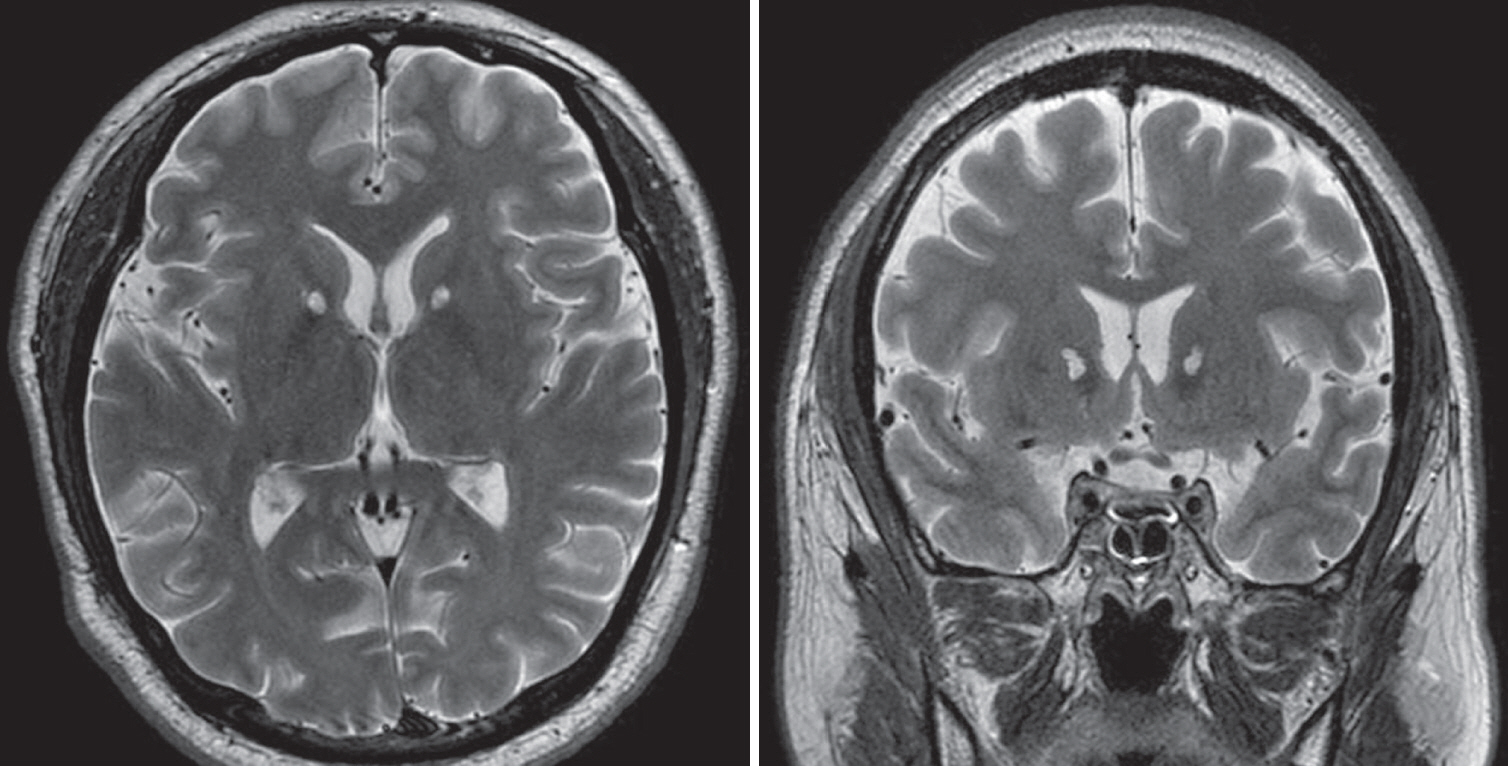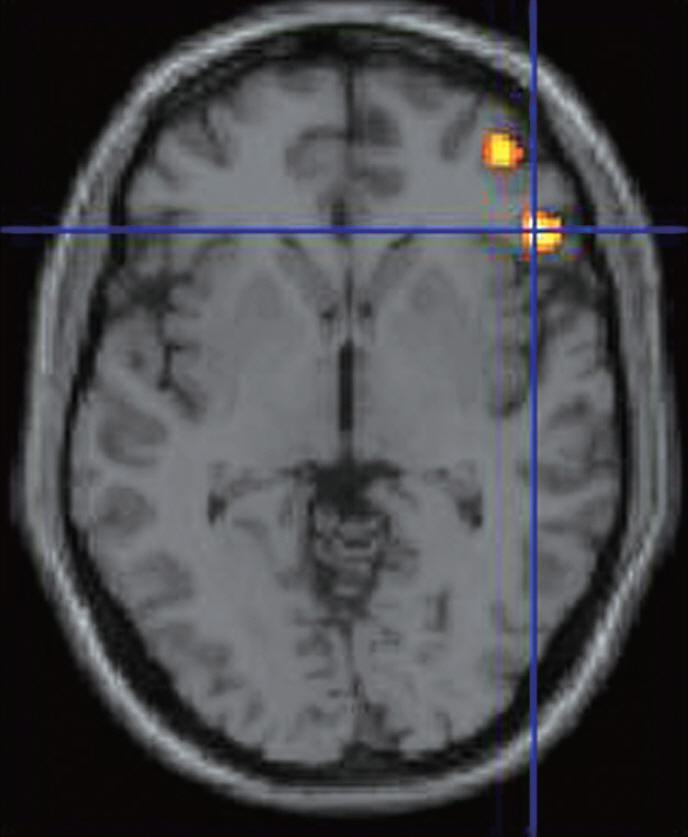J Korean Neurosurg Soc.
2018 Jul;61(4):427-433. 10.3340/jkns.2017.0505.004.
The Potential Usefulness of Magnetic Resonance Guided Focused Ultrasound for Obsessive Compulsive Disorders
- Affiliations
-
- 1Department of Neurosurgery and Brain Research Institute, Yonsei University College of Medicine, Seoul, Korea. jchang@yuhs.ac
- 2Department of Psychiatry and Institute of Behavioral Science, Yonsei University College of Medicine, Seoul, Korea.
- KMID: 2417317
- DOI: http://doi.org/10.3340/jkns.2017.0505.004
Abstract
- Obsessive compulsive disorder is a debilitating condition characterized by recurrent obsessive thoughts and compulsive reactions. A great portion of the obsessive compulsive disorder (OCD) patients are managed successfully with psychiatric treatment such as selective serotonin-reuptake inhibitor and cognitive behavioral psychotherapy, but more than 10% of patients are remained as non-responder who needs neurosurgical treatments. These patients are potential candidates for the neurosurgical management. There had been various kind of operation, lesioning such as leucotomy or cingulotomy or capsulotomy or limbic leucotomy, and with advent of stereotaxic approach and technical advances, deep brain stimulation was more chosen by neurosurgeon due to its characteristic of reversibility and adjustability. Gamma knife radiosurgery are also applied to make lesion targeting based on magnetic resonance (MR) imaging, but the complication of adverse radiation effect is not predictable. In the neurosurgical field, MR guided focused ultrasound has advantage of less invasiveness, real-time monitored procedure which is now growing to attempt to apply for various brain disorder. In this review, the neurosurgical treatment modalities for the treatment of OCD will be briefly reviewed and the current state of MR guided focused ultrasound for OCD will be suggested.
Keyword
MeSH Terms
Figure
Reference
-
References
1. Ballantine HT Jr, Bouckoms AJ, Thomas EK, Giriunas IE. Treatment of psychiatric illness by stereotactic cingulotomy. Biol Psychiatry. 22:807–819. 1987.
Article2. Ballantine HT Jr, Cassidy WL, Flanagan NB, Marino R Jr. Stereotaxic anterior cingulotomy for neuropsychiatric illness and intractable pain. J Neurosurg. 26:488–495. 1967.
Article3. Björgvinsson T, Hart J, Heffelfinger S. Obsessive-compulsive disorder: update on assessment and treatment. J Psychiatr Pract. 13:362–372. 2007.
Article4. Brown LT, Mikell CB, Youngerman BE, Zhang Y, McKhann GM 2nd, Sheth SA. Dorsal anterior cingulotomy and anterior capsulotomy for severe, refractory obsessive-compulsive disorder: a systematic review of observational studies. J Neurosurg. 124:77–89. 2016.
Article5. David M, Talairach J, Hecaen H. Perspectives thérapeutiques issues de la méthode de repérage et de coagulation localisée des structures cérébrales sous-corticales. Bull Mem Soc Med Hop Paris. 65:459–461. 1949.6. D’Astous M, Cottin S, Roy M, Picard C, Cantin L. Bilateral stereotactic anterior capsulotomy for obsessive-compulsive disorder: long-term follow-up. J Neurol Neurosurg Psychiatry. 84:1208–1213. 2013.
Article7. Denys D, Mantione M, Figee M, van den Munckhof P, Koerselman F, Westenberg H, et al. Deep brain stimulation of the nucleus accumbens for treatment-refractory obsessive-compulsive disorder. Arch Gen Psychiatry. 67:1061–1068. 2010.
Article8. Dunsmore RH, Lennox MA. Stimulation and strychninization of supracallosal anterior cingulate gyrus. J Neurophysiol. 13:207–214. 1950.
Article9. Foltz EL, White LE Jr. Pain “relief” by frontal cingulumotomy. J Neurosurg. 19:89–100. 1962.
Article10. Fry WJ, Barnard JW, Fry FJ, Brennan JF. Ultrasonically produced localized selective lesions in the central nervous system. Am J Phys Med. 34:413–423. 1955.11. Fry WJ. Intense ultrasound in investigations of the central nervous system. Adv Biol Med Phys. 6:281–348. 1958.
Article12. Greenberg BD, Malone DA, Friehs GM, Rezai AR, Kubu CS, Malloy PF, et al. Three-year outcomes in deep brain stimulation for highly resistant obsessive-compulsive disorder. Neuropsychopharmacology. 31:2384–2393. 2006.
Article13. Gross D, Schäfer G. Egas Moniz (1874-1955) and the “invention” of modern psychosurgery: a historical and ethical reanalysis under special consideration of portuguese original sources. Neurosurg Focus. 30:E8. 2011.
Article14. Hassenbusch SJ, Pillay PK, Barnett GH. Radiofrequency cingulotomy for intractable cancer pain using stereotaxis guided by magnetic resonance imaging. Neurosurgery. 27:220–223. 1990.
Article15. Huff W, Lenartz D, Schormann M, Lee SH, Kuhn J, Koulousakis A, et al. Unilateral deep brain stimulation of the nucleus accumbens in patients with treatment-resistant obsessive-compulsive disorder: outcomes after one year. Clin Neurol Neurosurg. 112:137–143. 2010.
Article16. Jimenez-Ponce F, Velasco-Campos F, Castro-Farfán G, Nicolini H, Velasco AL, Salín-Pascual R, et al. Preliminary study in patients with obsessive-compulsive disorder treated with electrical stimulation in the inferior thalamic peduncle. Neurosurgery. 65(6 Suppl):203–209. discussion 209. 2009.17. Jung HH, Kim CH, Chang JH, Park YG, Chung SS, Chang JW. Bilateral anterior cingulotomy for refractory obsessive-compulsive disorder: long-term follow-up results. Stereotact Funct Neurosurg. 84:184–189. 2006.
Article18. Jung HH, Kim SJ, Roh D, Chang JG, Chang WS, Kweon EJ, et al. Bilateral thermal capsulotomy with mr-guided focused ultrasound for patients with treatment-refractory obsessive-compulsive disorder: a proof-of-concept study. Mol Psychiatry. 20:1205–1211. 2015.
Article19. Kihlström L, Hindmarsh T, Lax I, Lippitz B, Mindus P, Lindquist C. Radiosurgical lesions in the normal human brain 17 years after gamma knife capsulotomy. Neurosurgery. 41:396–401. discussion 401-402. 1997.
Article20. Kondziolka D, Flickinger JC, Hudak R. Results following gamma knife radiosurgical anterior capsulotomies for obsessive compulsive disorder. Neurosurgery. 68:28–32. discussion 23-33. 2011.
Article21. Kyriakou A, Neufeld E, Werner B, Paulides MM, Szekely G, Kuster N. A review of numerical and experimental compensation techniques for skull-induced phase aberrations in transcranial focused ultrasound. Int J Hyperthermia. 30:36–46. 2014.
Article22. Laitinen L, Toivakka E, Vilkki I. Rostral cingulotomy for mental disorders (electrophysiologic, psychological and clinical findings). Vopr Neirokhir. 37:23–30. 1973.23. Leksell L. Stereotactic radiosurgery. J Neurol Neurosurg Psychiatry. 46:797–803. 1983.
Article24. Lévêque M, Carron R, Régis J. Radiosurgery for the treatment of psychiatric disorders: a review. World Neurosurg. 80:S32.e1–e9. 2013.
Article25. Lippitz B, Mindus P, Meyerson BA, Kihlstrom L, Lindquist C. Obsessive compulsive disorder and the right hemisphere: topographic analysis of lesions after anterior capsulotomy performed with thermocoagulation. Acta Neurochir. Suppl 68:61–63. 1997.
Article26. Liu K, Zhang H, Liu C, Guan Y, Lang L, Cheng Y, et al. Stereotactic treatment of refractory obsessive compulsive disorder by bilateral capsulotomy with 3 years follow-up. J Clin Neurosci. 15:622–629. 2008.
Article27. Lopes AC, Greenberg BD, Canteras MM, Batistuzzo MC, Hoexter MQ, Gentil AF, et al. Gamma ventral capsulotomy for obsessive-compulsive disorder: a randomized clinical trial. JAMA Psychiatry. 71:1066–1076. 2014.
Article28. Mallet L, Polosan M, Jaafari N, Baup N, Welter ML, Fontaine D, et al. Subthalamic nucleus stimulation in severe obsessive-compulsive disorder. N Engl J Med. 359:2121–2134. 2008.
Article29. McGovern RA, Sheth SA. Role of the dorsal anterior cingulate cortex in obsessive-compulsive disorder: converging evidence from cognitive neuroscience and psychiatric neurosurgery. J Neurosurg. 126:132–147. 2017.
Article30. Mettler FA. A comparison between various forms of psychosurgery. N Y State J Med. 49:2283–2286. 1949.31. Mindus P, Bergström K, Levander SE, Norén G, Hindmarsh T, Thuomas KA. Magnetic resonance images related to clinical outcome after psychosurgical intervention in severe anxiety disorder. J Neurol Neurosurg Psychiatry. 50:1288–1293. 1987.
Article32. Nicola SM. The nucleus accumbens as part of a basal ganglia action selection circuit. Psychopharmacology (Berl). 191:521–550. 2007.
Article33. Nuttin B, Cosyns P, Demeulemeester H, Gybels J, Meyerson B. Electrical stimulation in anterior limbs of internal capsules in patients with obsessive-compulsive disorder. Lancet. 354:1526. 1999.
Article34. Nuttin BJ, Gabriëls LA, Cosyns PR, Meyerson BA, Andréewitch S, Sunaert SG, et al. Long-term electrical capsular stimulation in patients with obsessive-compulsive disorder. Neurosurgery. 52:1263–1272. discussion 1272-1274. 2003.
Article35. Oliver B, Gascón J, Aparicio A, Ayats E, Rodriguez R, Maestro De León JL, et al. Bilateral anterior capsulotomy for refractory obsessive-compulsive disorders. Stereotact Funct Neurosurg. 81:90–95. 2003.
Article36. Rodman AM, Milad MR, Deckersbach T, Im J, Chou T, Dougherty DD. Neuroimaging contributions to novel surgical treatments for intractable obsessive-compulsive disorder. Expert Rev Neurother. 12:219–227. 2012.
Article37. Rück C, Karlsson A, Steele JD, Edman G, Meyerson BA, Ericson K, et al. Capsulotomy for obsessive-compulsive disorder: long-term follow-up of 25 patients. Arch Gen Psychiatry. 65:914–921. 2008.38. Saxena S, Rauch SL. Functional neuroimaging and the neuroanatomy of obsessive-compulsive disorder. Psychiatr Clin North Am. 23:563–586. 2000.
Article39. Scoville WB. Selective cortical undercutting as a means of modifying and studying frontal lobe function in man; preliminary report of 43 operative cases. J Neurosurg. 6:65–73. 1949.
Article40. Sheth SA, Neal J, Tangherlini F, Mian MK, Gentil A, Cosgrove GR, et al. Limbic system surgery for treatment-refractory obsessive-compulsive disorder: a prospective long-term follow-up of 64 patients. J Neurosurg. 118:491–497. 2013.
Article41. Skoog G, Skoog I. A 40-year follow-up of patients with obsessive-compulsive disorder. Arch Gen Psychiatry. 56:121–127. 1999.
Article42. Spiegel EA, Wycis HT. Effect of 3-orthotoloxy-1,2-propanediol (tolserol, myanesin) upon electrogram of human cortex and subcortex. Proc Soc Exp Biol Med. 72:446–448. 1949.
Article43. Steketee G, Frost RO, Cohen I. Beliefs in obsessive-compulsive disorder. J Anxiety Disord. 12:525–537. 1998.
Article44. van den Heuvel OA, van der Werf YD, Verhoef KM, de Wit S, Berendse HW, Wolters ECh, et al. Frontal-striatal abnormalities underlying behaviours in the compulsive-impulsive spectrum. J Neurol Sci. 289:55–59. 2010.
Article45. van Kuyck K, Brak K, Das J, Rizopoulos D, Nuttin B. Comparative study of the effects of electrical stimulation in the nucleus accumbens, the mediodorsal thalamic nucleus and the bed nucleus of the stria terminalis in rats with schedule-induced polydipsia. Brain Res. 1201:93–99. 2008.
Article46. Videnovic A, Metman LV. Deep brain stimulation for parkinson’s disease: prevalence of adverse events and need for standardized reporting. Mov Disord. 23:343–349. 2008.
Article47. Vos T, Mathers CD. The burden of mental disorders: a comparison of methods between the Australian burden of disease studies and the global burden of disease study. Bull World Health Organ. 78:427–438. 2000.48. Whitty CW, Duffield JE, Tov’ PM, Cairns H. Anterior cingulectomy in the treatment of mental disease. Lancet. 1:475–481. 1952.
Article
- Full Text Links
- Actions
-
Cited
- CITED
-
- Close
- Share
- Similar articles
-
- Magnetic Resonance-Guided Focused Ultrasound in Neurosurgery: Taking Lessons from the Past to Inform the Future
- Obsessive-compulsive Disorder in a Patient with 47,XXX, Triple X Syndrome
- Aripiprazole Improved Obsessive Compulsive Symptoms in Asperger's Disorder
- New Onset Obsessive Compulsive Disorder Following High Frequency Repetitive Transcranial Magnetic Stimulation over Left Dorsolateral Prefrontal Cortex for Treatment of Negative Symptoms in a Patient with Schizophrenia
- The form and content of obsessions and compulsions in the obsessive-compulsive disorder




